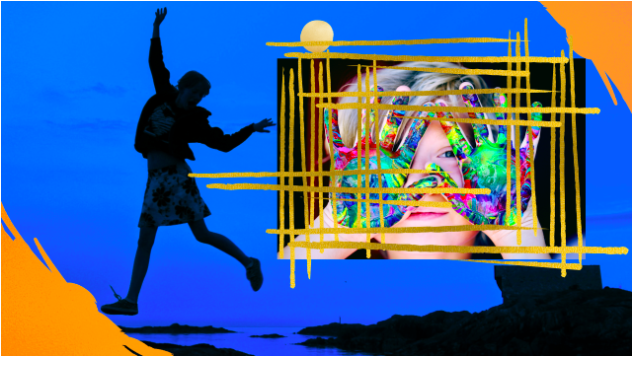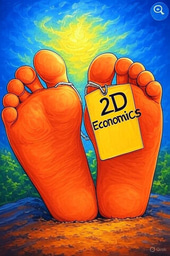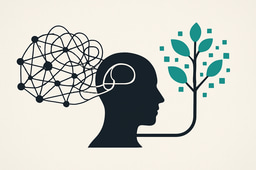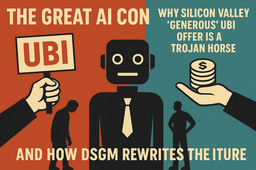The shift of intelligence “The more we use Large Models the more it become intelligent and we are stupid fool”
Published in Sustainability, Anatomy & Physiology, and Behavioural Sciences & Psychology

Let’s talk about something that’s quietly creeping into our lives but has the potential to change everything: the shift in intelligence driven by AI. As large models get smarter, there’s a growing risk that we, the humans, might start looking a little, well, so stupid. It’s not about offending anyone; it’s about the real consequences of how our tech habits could impact our brains and creativity.
Think back to the industrial revolution. Sure, it made life easier with machines taking over tough jobs, but it also left us less physically fit because we weren’t using our muscles, it became weaker and poor. Same, look at using calculators and what they have our mental math skills. We let the machines handle the heavy lifting, and over time, our own brainpower might have taken a hit.
Now, why progressive use of AI will be any exception? This is where things get really interesting—and a bit worrisome. AI isn’t just crunching numbers; it’s a bout complex cognitive tasks, creating art, writing stories, and even handling emotional support. Sounds impressive, right? But here’s the kicker: as AI takes on more of these roles, we might start doing them less ourselves. AI generates stunning artwork, writes heart-wrenching poetry, and provides emotional guidance. If we rely too much on these AI marvels, we might find ourselves losing touch not only with our intellectual capabilities but also with our own creative and emotional skills.
Take art, for example. With AI creating masterpieces, there’s a risk we might pick up a paintbrush or pen less often. Our own artistic abilities could fade as AI’s creativity steals the spotlight. And what about our emotions? AI that simulates empathy might make us less in tune with our own feelings and those of others. We could end up with a diluted understanding of what it means to truly connect on an emotional level.
Here’s the real kicker: dependency on AI could lead to cognitive atrophy. If AI handles tasks like problem-solving or artistic creation, we might find our own skills withering away. Look a bit further, your kids or future generations, imagine a world where we’re so reliant on AI that we forget how to think critically or create something original. It’s a scenario where our once-vibrant abilities might shrink, leaving us looking pretty foolish in comparison to our sophisticated AI counterparts.
What Could be the Optimised Application of AGI?
As digital technology continues to evolve at lightning speed, its impacts on humanity are global, instantaneous, and often catch us off guard. Unlike previous technologies that had more gradual effects, digital tech’s influence is immediate and sweeping. This isn’t just a reason to be cautious; it’s a clear call for action. Planning for a digital civilization isn’t optional—it’s essential.
Have said that, and raised the concern about the cognitive hazards of AI, now let plan ahead how to not only protect our human cognation but also to use it as never before. So, is AGI (Artificial General Intelligence) all about technology, models, or applications? Not quite. It’s about shaping the very fabric of our civilization. What once seemed like an unreachable dream is now within our grasp, thanks to AGI. Civilization isn’t just about advancements in technology; it’s about how societies grow and evolve collectively over time.
Classification for the digital and cognitive AI hazards: urgent call to establish automated safe standard for protecting young human minds
In our digital age, building what we call a “digital civilization” means moving from haphazard development to deliberate design. We can’t let this progress happen on autopilot. Instead, we need to guide technology, applications, and models with clear, strategic goals. Innovation must be purposeful, with outcomes that align with our objectives from the very start.
What Should Digital Civilization Aim to Build?
Regulations and laws alone won’t suffice in the journey towards a sustainable digital civilization—they’re reactive, not proactive. What we need is a profound integration of human development into the very essence of technology. Picture this: supporting individuals not just in physical health but in mental and cognitive growth throughout their lives. Imagine a culture of continuous innovation, where problem-solving skills are honed as second nature. Envision strong families, cohesive nations, and a world united as a global community.
Now, the big question: how do we make this vision a reality? The answer lies in the “Digital Sustainable Growth Model.” This framework isn’t just another blueprint; it’s the key to overcoming these challenges and shaping a future where technology serves humanity’s highest ideals.
Introducing the Digital Sustainable Growth Model
Over the past decades, we've developed a range of applications designed to tackle these issues, paving the way for the AGI era. The Human Information Technology Laboratory has been at the forefront, crafting pragmatic solutions by diagnosing problems, pinpointing their roots, and reverse-engineering effective responses. While earlier tech limitations made this difficult, recent advancements have made it possible to move forward.
New model for digital sustainable growth: Insights from human biology and surgical approach - a retrospective analysis of 15 years of constant socio-economic innovations at the Human Information Technology Lab, Finland
The Digital Sustainable Growth Model is built on decades of learning from past mistakes. It aims to construct a digital civilization that thoughtfully addresses humanity’s future needs while using digital power responsibly. This approach, known as sustainable intelligence, seeks a balanced coexistence between natural and artificial intelligence. By understanding the fundamentals of human intelligence, we can develop technologies that support and enhance humanity. The result of this era, termed “artificial humanity,” represents our contribution to civilization in the digital age.
Leveraging the Digital Sustainable Growth Model (DSGM) to Drive Economic Growth:Transforming Innovation Uncertainty into Scalable Technology
Ring the Bill at The Gates
As the world races to claim the lead in AI development, it's clear that true leadership won’t be judged by the speed or size of advancements alone. The real challenge lies in using this technology to address humanity's most pressing—and nearly impossible—task: closing the sustainability gap. We face the looming shadow of cumulative global debt, which has now soared to nearly $400 trillion, encompassing household, private, and public debt. This figure is staggering, and the burden threatens to destabilize economies, societies, and the future of our planet.
This is where the Digital Sustainable Growth Model and AGI come together. It’s not just another vision or theoretical roadmap—it's a pragmatic model designed to tackle both the global debt crisis and the broader sustainability challenge head-on. Leveraging AGI and large-scale intelligence systems to unravel the complexities of these global problems. If AI can’t help us address these monumental tasks, what is it for?
Digital Sustainable Growth Model (DSGM): Achieving Synergy Between Economy and Technology to Mitigate AGI Risks and Address Global Debt Challenges
We need this "giant intelligence" to take on what human capabilities cannot: solving the unsolvable. The ability to close the sustainability gap is perhaps one of the greatest tests of AGI’s value to humanity. There are tech giants—individuals and organizations—who have long carried the banner of philanthropy, leading initiatives and shaping the future. They have the vision, the resources, and the influence to make this real.
But words are no longer enough. The model is here, and the time for action is now. What’s left? The will. The leadership. The decision to step up.
Follow the Topic
What are SDG Topics?
An introduction to Sustainable Development Goals (SDGs) Topics and their role in highlighting sustainable development research.
Continue reading announcement




Please sign in or register for FREE
If you are a registered user on Research Communities by Springer Nature, please sign in